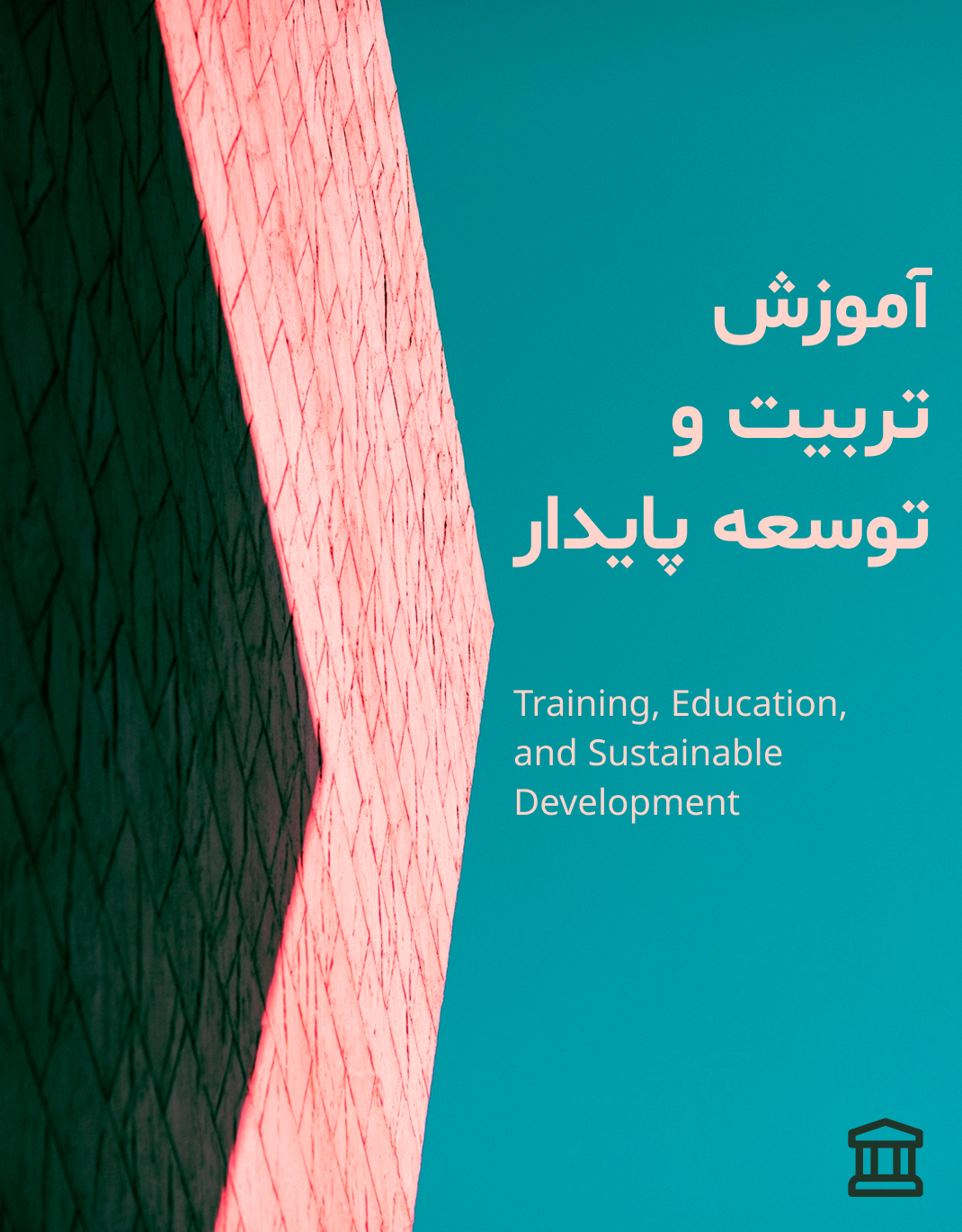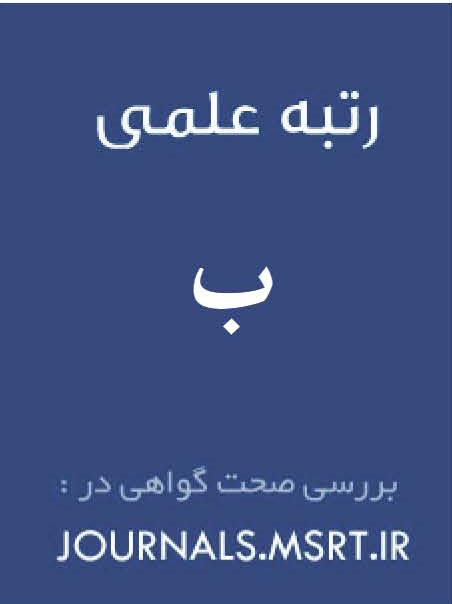ارائه الگویی برای کاهش فساد اداری در ساختار نظام مالی کشور (مطالعه موردی: بانک رفاه کارگران)
کلمات کلیدی:
فساد اداری, نظام مالی, بانک رفاه کارگران, شفافیت, عدالت سازمانی, نظارتچکیده
هدف این پژوهش ارائه الگویی جامع برای کاهش فساد اداری در ساختار نظام مالی کشور با تأکید بر نظام بانکی ایران است. این پژوهش از نظر هدف، کاربردی و از نظر ماهیت، کیفی است. روش تحقیق بهصورت آمیخته و در چارچوب طرح اکتشافی انجام شد. جامعه آماری شامل خبرگان دانشگاهی و اجرایی در حوزه بانکداری و مالی بود که بهصورت هدفمند و با روش گلولهبرفی، ۱۵ نفر از آنان انتخاب شدند. ابزار گردآوری دادهها مصاحبه نیمهساختاریافته بود و دادهها با نرمافزار MAXQDA و روش تحلیل مضمون اترید–استرلینگ در سه سطح مضامین پایه، سازماندهنده و فراگیر تجزیه و تحلیل شدند. برای اطمینان از روایی، از تأیید خبرگان و پرمایگی دادهها استفاده گردید. نتایج تحلیل مضمون نشان داد ۱۲ طبقه اصلی شامل عوامل فردی، سازمانی، قانونی، اجتماعی، فرهنگی، اقتصادی، سیاسی، قضایی، نظارتی، فرآیندهای کاری، کیفیت زندگی کاری و تعهد سازمانی کارکنان در کاهش فساد اداری نقش دارند. از میان آنها، شفافیت فرایندها، حاکمیت قانون، نظارت کارآمد، آموزش کارکنان، عدالت سازمانی و ارتقای فرهنگ اخلاق حرفهای بیشترین اهمیت را داشتند. این عوامل در قالب الگویی مفهومی برای کاهش فساد در نظام مالی کشور ارائه گردیدند. بر اساس یافتهها، تقویت شفافیت، نظارت، عدالت سازمانی، آموزش و فرهنگسازی، اصلاح ساختارهای اداری و ارتقای تعهد سازمانی میتواند بهطور مؤثر فساد اداری را در نظام بانکی و مالی کشور کاهش دهد. اجرای مدل پیشنهادی میتواند بستر سلامت اداری، پاسخگویی و اعتماد عمومی را فراهم کند.
دانلودها
مراجع
Alavari, A., Javanmard, B., Fazli, M., & Adabi, H. R. (2023). Criminalizing Corruption in the Private Sector: Historical Developments and Domestic and International Documents. Legal Excellence Quarterly, 9(1), 123-157. https://www.thdad.ir/article_701436.html
Ali Akbari, R., Ahmadi, S., Morovati, I., & Karimi, B. (2023). Critique and Evaluation of Proactive Criminal Policy Against Administrative Corruption in Iran's Criminal System. Legal Civilization Quarterly, 6(14), 221-244. https://www.pzhfars.ir/article_169911.html
Farhadinejad, M., & Biki, K. (2023). Longitudinal Study of the Causes of Administrative Corruption and Methods of Control in the Years 1999, 2009, and 2020. Outlook on Public Management Quarterly, 14(1), 59-75. https://jpap.sbu.ac.ir/article_102677.html
Farinha, J., & López-de-Foronda, O. (2023). The impact of corruption on investment and financing in the European Union: new insights. The European Journal of Finance, 29(16), 1-6. https://www.journals.uchicago.edu/doi/10.1086/687209
Ghahramani, S., Sepahvand, R., Hekak, M., & Vahdati, H. (2023). Designing a Structural Capital Model to Reduce Corruption in the Banking Network Using Grounded Theory. Transformation management journal, 15(29), 1-18. https://tmj.um.ac.ir/article_44160.html
Hosseini, S. M. S., Omidzadeh, B., & Biglari, F. (2024). Judicial Corruption from the Perspective of Zemiology. 10th International and National Conference on Management, Accounting, and Law Studies.
Jenkins, H., Alshareef, E., & Mohamad, A. (2023). The impact of corruption on commercial banks' credit risk: Evidence from a panel quantile regression. International Journal of Finance & Economics, 28(2), 1364-1375. https://doi.org/10.1002/ijfe.2481
Kalantari Sarcheshmeh, N., Sharmsar Hasanali Deh, A., & Nematollahi, S. M. S. (2024). Financial Corruption and Money Laundering. https://civilica.com/doc/2190676
Liu, D. (2023). Credit Corruption, Government Relation and Corporate Innovation. Finance Research Letters, 58, 1-18. https://doi.org/10.1016/j.frl.2023.104408
Moradi, P., & Rafiei, A. (2024). Prioritizing Structural Components of Administrative Corruption in Contemporary Iran. Strategic Studies Quarterly, 27(1), 87-108.
Nguyen, Q. K. (2022). The impact of risk governance structure on bank risk management effectiveness: Evidence from ASEAN countries. Heliyon, 8(10), 1-17. https://doi.org/10.1016/j.heliyon.2022.e11192
Ogungbamila, B., & Ajayi, O. F. (2024). Relationship between moral intelligence and corruption tolerance among public sector employees: Does life satisfaction matter? Mediterranean Journal of Social & Behavioral Research, 8(2), 61-69. https://doi.org/10.30935/mjosbr/15789
Patria, V. (2024). The Importance of Renewing the Whistle Blower Regulation for Corruption Crimes in Indonesia. JHCJ, 4(1), 18-30. https://doi.org/10.30588/jhcj.v4i1.1833
Rahpeyma, A., Naderinasab, M., & Nasiri Farsani, M. (2024). Analysis of Corruption in the Managerial Elections of Sports Federations and Its Impact on Development Strategies. Dynamic Management and Business Analysis, 3(2), 34-50. https://doi.org/10.22034/dmbaj.2024.2040251.1110
Ramsheh, M. S., Ardestani, A. B., Tohidfam, M., & Motallebi, M. (2022). The Role of Good Governance in the Efficient Functioning of the Government Fighting Economic Corruption in the Islamic Republic of Iran. International Journal of Political Science, 12(3), 143-158. https://journals.iau.ir/article_699280_29a57e4b456ab37f9816d03d556ea5d6.pdf
Saeedi, R. (2024). Anti-Corruption Academies and Institutions. General Inspection Organization.
Safaei Shakib, A., Sarshar, S., & Rostami Mal-Khalifeh, R. (2023). Analyzing the Relationship Between Ethical Strategies and Ethical Environment on Reducing Administrative Corruption: The Mediating Role of Ethical Restraint. Ethics in Science and Technology Quarterly, 18(1), 69-77. https://ethicsjournal.ir/article-1-2939-fa.html
Taghavi, M., Tavakoli, F., & Jalilian, R. (2024). Explaining the Geopolitics of Effective Criteria in Anti-Corruption Laws from an Islamic Perspective. Geography Quarterly (Regional Planning), 14(54).
Tawiah, V., Zakari, A., & Alvarado, R. (2024). Effect of Corruption on Green Growth. Environment.
Taylor, I. W., Ullah, M. A., Koul, S., & Ulloa, M. S. (2022). Evaluating the impact of institutional improvement on control of corruption-A system dynamics approach. Systems, 10(3), 64-79. https://doi.org/10.3390/systems10030064
Troisi, R., & Alfano, G. (2023). The re-election of corrupt mayors: Context, relational leadership and level of corruption. Local Government Studies, 49(1), 204-225. https://doi.org/10.1080/03003930.2022.2087060
Tungga, A. F., Hartiwiningsih, & Leo, R. P. (2025). Non-Litigation Paradigm and the Principle of Criminal Proportionality in Corruption Cases with Mild Error Levels. Journal of Posthumanism, 5(3), 1296-1309. https://posthumanism.co.uk/jp/article/view/910
Utami, E. R., & Barokah, Z. (2024). The determinants of corporate anti-corruption disclosures: evidence from construction companies in the Asia-Pacific. Corporate Governance, 24(6), 1414-1441. https://doi.org/10.1108/CG-04-2023-0152
Zafeiriou, E., Garefalakis, A., Passas, I., & Ragazou, K. (2023). Illicit and Corruption Mitigation Strategy in the Financial Sector: A Study with a Hybrid Methodological Approach. Sustainability, 15(2), 1366-1382. https://doi.org/10.3390/su15021366
دانلود
چاپ شده
ارسال
بازنگری
پذیرش
شماره
نوع مقاله
مجوز
حق نشر 2025 مجید جاهدی پور (نویسنده); مرتضی یاراحمدی; سراج الدین محبی (نویسنده)

این پروژه تحت مجوز بین المللی Creative Commons Attribution-NonCommercial 4.0 می باشد.

